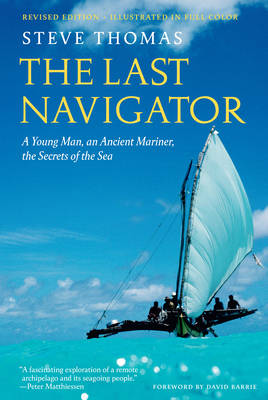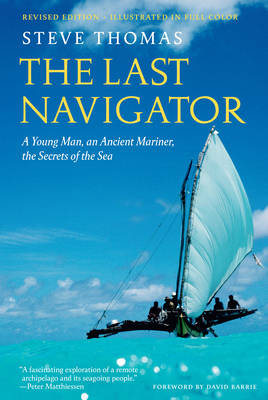
- Afhalen na 1 uur in een winkel met voorraad
- Gratis thuislevering in België vanaf € 30
- Ruim aanbod met 7 miljoen producten
- Afhalen na 1 uur in een winkel met voorraad
- Gratis thuislevering in België vanaf € 30
- Ruim aanbod met 7 miljoen producten
Zoeken
Omschrijving
As a young man piloting a small sailboat across the Pacific, Steve Thomas developed a fascination with ancient methods of navigation. He learned that, for thousands of years, the peoples of Oceania had sailed unerringly across the Pacific without compass or charts, guided only by natural signs--stars, waves, and the flight paths of birds. In search of this secret knowledge, Thomas traveled to the tiny island of Satawal in Micronesia, home to Mau Piailug, one of the few surviving paliuw, or navigators. In The Last Navigator, Thomas tells how he convinced Piailug to accept him as his student and teach him the closely guarded Talk of Navigation. It is a remarkable book, offering at once a clear and precise account of Micronesian wayfinding and the moving story of one man trying to preserve his culture against the tide of modernity.
Now, forty years after his original journey to study under Mau Piailug, Thomas has worked with a new generation of researchers, including natives of Satawal, to prepare this revised edition of The Last Navigator. All Satawalese words are rendered in the now-accepted orthography, and the islanders, originally identified by pseudonyms, appear under their true names. And throughout, Thomas has added a generous selection of color photographs from his time on Satawal, documenting the island, its people, and its seafaring culture. This result is a lasting tribute to the spirit of the Satawalese, and to the Talk of Navigation.
Now, forty years after his original journey to study under Mau Piailug, Thomas has worked with a new generation of researchers, including natives of Satawal, to prepare this revised edition of The Last Navigator. All Satawalese words are rendered in the now-accepted orthography, and the islanders, originally identified by pseudonyms, appear under their true names. And throughout, Thomas has added a generous selection of color photographs from his time on Satawal, documenting the island, its people, and its seafaring culture. This result is a lasting tribute to the spirit of the Satawalese, and to the Talk of Navigation.
Specificaties
Betrokkenen
- Auteur(s):
- Uitgeverij:
Inhoud
- Aantal bladzijden:
- 336
- Taal:
- Engels
Eigenschappen
- Productcode (EAN):
- 9780789215116
- Verschijningsdatum:
- 25/11/2025
- Uitvoering:
- Paperback
- Formaat:
- Trade paperback (VS)
- Afmetingen:
- 153 mm x 226 mm
- Gewicht:
- 635 g

Alleen bij Standaard Boekhandel
+ 44 punten op je klantenkaart van Standaard Boekhandel
Beoordelingen
We publiceren alleen reviews die voldoen aan de voorwaarden voor reviews. Bekijk onze voorwaarden voor reviews.








